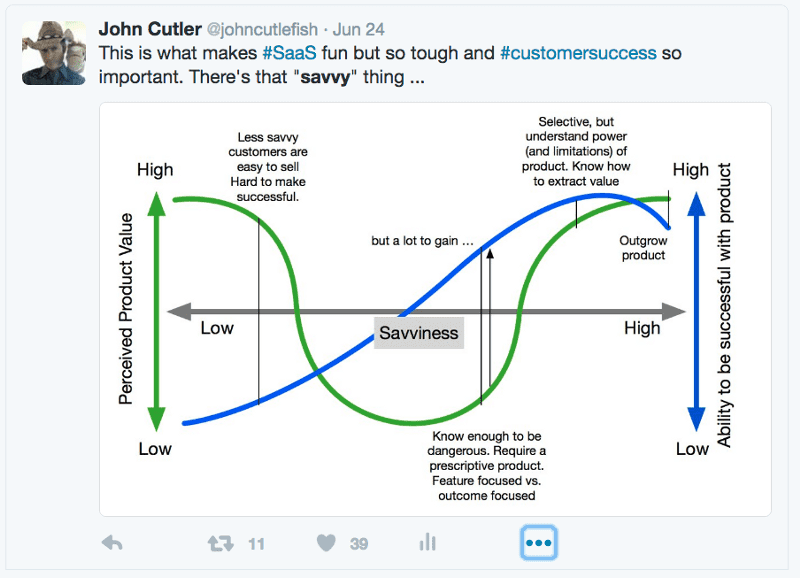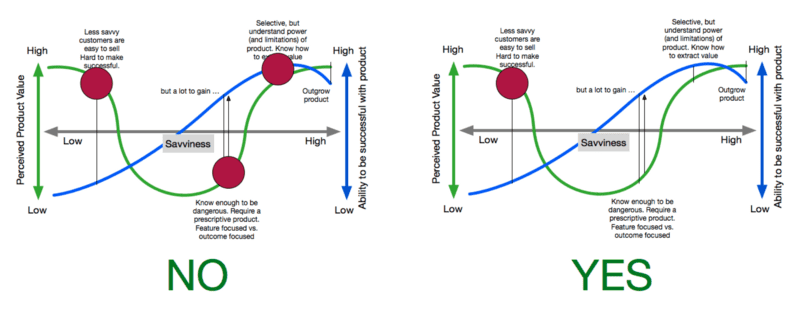I have received a lot of questions about a graphic I posted on Twitter recently:
Let me explain it in more depth.
Product personas often feature some version of the “savviness” scale. The idea is pretty simple: some humans are skilled at [insert competency here], and others are not. An accounting product might feature:
- Accounting savvy
- Technical savvy
- Management savvy The challenge is as follows. Product and UX are acutely aware that it is difficult to build a product for users with different savviness levels. But it can be tough to line up the organization around that conviction, especially in the light of mixed messages from the market.
Prospects with low savvy can be relatively easy to sell to and close. They feel the pain acutely, but are less demanding and selective. The trouble arrises when you try to make these customers successful with the product. Let’s say you lack exercise savvy and are rapidly gaining weight. You’ll be easily persuaded to join a gym (high perceived product value). But you’ll need constant monitoring, coaching, and coaxing (low ability to be successful with product). Confoundingly, this has nothing to do with budget. Some of the biggest deals come from the least savvy prospects.
Medium savvy customers are a mysterious bunch. They’re aware enough to know what’s possible, and shop more aggressively. The RFP magically grows in scope as they eagerly pile on feature requirements. When I worked at a bike store we joked that the “moderately informed” customer was the toughest to sell and please. But once you got them on a good bike (and put to rest their misguided assumptions) they had the most fun! So they may initially see low perceived value in the product, but have the most to gain in their ability to be successful with the product.
High savvy customers, on the other hand, are selective but realistic. They understand the limits of products, and mix-match to achieve their goals. For example, I am a savvy user of analytics tools. Yes I’m somewhat finicky about features, but I know that you need a quiver of tools to do the best job, and that there is often no one right way. I’m able to extract a lot of value out of products, but in so doing they become somewhat interchangeable. The delta from perceived value to actual value is diminished compared to the medium savvy user.
The takeaways is that the behavioral traits that might predict a sale are often not the same traits that will indicate the ability for a customer to thrive using your product. This isn’t to imply that targeting less savvy users is a bad idea but rather that trying to target all three is a bad idea (unless you’ve truly nailed one, and are ready to branch out). Even if the sales are rolling in. Someone (usually customer success, customer support, or product) will feel the sting.
You need to target the same persona with intent across the full customer journey including marketing, sales, on-boarding, product, and customers success. They’re unique, and each require a unique approach. Don’t silo the persona building activity inside the product team. Extend it across the whole organization, and align around that vision.

